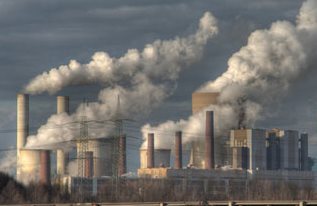A little over a month ago, EPA held virtual public hearings on its proposed rule to NOT change the particulate matter standards.
The deadline for commenting on the EPA proposed rule to NOT CHANGE the PM standards is Monday, June 29. If you are a health professional, sign our letter to the EPA about the standards, and it can serve as a comment from you. (You can also submit another comment directly to the EPA. You are not limited to one comment.)
This is the testimony of Dr. Anne Mellinger-Birdsong, medical education advisor to Mothers and Others for Clean Air.
I testified at the hearing as a pediatrician, because I know how damaging air pollution is to children’s health, development, and lung growth, and I would rather keep air pollution out of the air and keep kids healthy and thriving. Just like vaccines keep children from getting sick, keeping air pollution out of the air also keeps children from getting sick.
I testified because I know how damaging air pollution is to everyone’s health and wellbeing, and our ability to do our jobs well. It makes me sad to think how many people needlessly suffer illness or die every year, because there is still too much air pollution.
I testified as a mother of two – our kids were born when our city had many air pollution exceedances every year. We have improved some, but science shows the current standards do not protect health and I am still concerned for their health. And, I testified for myself, because I have lived in cities with air pollution problems and I know what it is doing to my lungs and body.
– – – – –
“I’m speaking on behalf of Mothers And Others For Clean Air.
Let me state up front: We oppose this proposal to retain the current NAAQS standards, because it does not protect human health, and it is especially harmful to vulnerable groups such as children, pregnant women, and communities of color.
I will review some of the studies that have been published since the last update of the PM2.5 standards, but 5 minutes allows time for only a few.
In 2017, Di and colleagues studied ALL 60 million Medicare recipients all across the U.S. They found a 7% increase risk of death for every 10µg/m3 increase in annual PM2.5. This risk was even higher for people with Native American, Asian, and Hispanic heritage at about 10%, and for black people the risk was much higher, at almost 21%. This study found an increased risk of death at levels well below the current standard, down to about 6-7µg/m3.
In 2018, Casey and colleagues studied communities in California before and after coal plants closed. They found that there were fewer preterm births AFTER the coal plants closed, showing that the coal plants and the particulate matter they produce are dangerous to pregnant women and their babies.
In 2018, Bowe and colleagues found an increased risk of new chronic kidney disease and progression to end stage renal disease in Veterans with higher exposure to particulates. Veterans who lived in counties with an annual PM2.5 level of 9.1 µg/m3 had almost half the rate of end stage renal disease compared to those who lived in counties where the PM2.5 level was 12.7 µg/m3 or higher.
In 2018, Strosnider and colleagues studied emergency visits for respiratory infections, asthma exacerbations, COPD exacerbations, and pneumonia. They found increased risk for all of these health problems when daily particulates increased.
Also in 2018, Horne and colleagues found an increased risk of respiratory infections, specifically pneumonia, influenza, and respiratory syncytial virus due to spikes in PM2.5 from wildfires. The risk was increased for ALL ages, from infants through those who are over 65 years.
In 2019, Pope and colleagues studied all Americans, and found a 13% increased risk for death for every 10µg/m3 increase in annual PM2.5. For cardiovascular diseases, the increased risk of death was 30%, and for pneumonia and influenza, the increased risk of death was almost 50%.
In 2019, Wei and colleagues published a study that found that every 1 µg/m3 increase in daily PM2.5 is associated with 5700 extra hospitalizations each year, $100 million in extra direct costs each year, and $6 billion in costs for premature loss of life.
Other studies have shown effects on cognitive performance from particulates in children in middle and high school, in stock traders, and in people who work in call centers.
These studies clearly show that the current particulate standards are inadequate to protect Americans’ health. We will experience more disease, more suffering, more missed days of school and work, more trouble doing school work or our jobs, and more deaths if the standards are not strengthened. It also costs us hundreds of millions of dollars in direct costs each year.
To protect health, the NAAQS standards for particulates should be lowered, not retained. Therefore we oppose the proposal to retain the current standards, which clearly do not protect health.
And we ask the question: Since this proposed rule so clearly ignores science and doesn’t protect health, what is the reason for a rule being proposed that uses the legal structure of EPA to retain standards that DO NOT protect health?”





